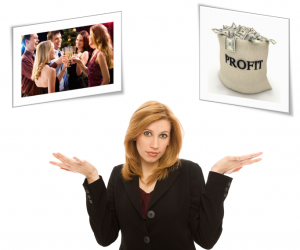 Let’s say you run a day-care center and you’re tired of parents being late to pick up their kids. What do you do? How about instituting a fine? That seems like it’s logical and could be effective. If parents had to pay extra, one would assume that they would be more likely to be on time. But one would be wrong.
Let’s say you run a day-care center and you’re tired of parents being late to pick up their kids. What do you do? How about instituting a fine? That seems like it’s logical and could be effective. If parents had to pay extra, one would assume that they would be more likely to be on time. But one would be wrong.
In January, 2000, Uri Gneezy and Aldo Rustichini published a study titled, “A Fine is a Price.” In this study, they followed six day-care centers in Israel. They found that, on average, there were seven or eight late pickups per week across the ten centers they were monitoring. At six of these centers, they instituted a fine for late pickups and the effect was immediate and striking. The incidences of lateness steadily increased over a four week period. Eventually, the average number of late pickups peaked around twenty – almost triple the original rate. What happened? And what has this to do with social media?
Mixed Norms
Gneezy and Rustichini attributed this to something they called an “incomplete contract.” The rules that were in place were sufficiently ambiguous that customers had to figure for themselves what was appropriate behavior. In those circumstances, we tend to fall back on social norms. Social norms are a set of unwritten rules that determine what is and is not acceptable behavior in social situations. However, in the case of the day-care experiment, instituting a fine shattered the ambiguity and replaced it with an economic norm. The parents no longer feared social repercussions. They determined that the convenience of showing up whenever they wanted was worth the price.

Oil and water courtesy of andredoreto on Flickr
This is an example of “mixed norms.” When we combine social behaviors with an economic situation or vice versa, we get unpredictable (and sometimes volatile) situations. Consider, for example, finishing a holiday dinner at your parents’ house. You compliment the cook(s) on a terrific meal and pull out your checkbook asking, “How much do I owe you?” Most people would be offended and might even throw a utensil in your direction. Dating also carries such risks.
Social media also carries such risks.
Social Media and Norms
Make no mistake. Social norms are in play in all social media channels. The main reason for this is that when it comes to social networks, the users are also the owners. This is not the case in most other media with which companies are used to dealing (e.g. television, radio, newspapers, even Google). And so their tendency is to dive into social media with their economic norm behaviors. The result is that people will automatically tune them out and unfollow/unfriend them. In a sense, the companies have placed a virtual fee on their social media presence. This fundamentally changes the relationship from a social one to an economic one. Game over, influence squandered.
And here’s the really bad news…
Mixing Norms is Irreversible
 Back to Gneezy and Rustichini. After five months, the day-care centers rescinded the fining policy. However, the behaviors didn’t change. It turns out that once you change the relationship from social to economic, you cannot go back. It’s altered permanently and there’s nothing you can do about it.
Back to Gneezy and Rustichini. After five months, the day-care centers rescinded the fining policy. However, the behaviors didn’t change. It turns out that once you change the relationship from social to economic, you cannot go back. It’s altered permanently and there’s nothing you can do about it.
This should give pause to companies currently or planning to be involved in social media. You had better get it right the first time, because you won’t get a second chance. So how does a company insure it’s following social norms? Well, there’s a four letter word that spells social media success; gift. Make sure the vast majority of the content you’re creating and sharing can be considered as a gift to your audience and you should be fine.

Very interesting psychology at work here! Makes a lot of sense when I read it — although I think the day care centers perhaps were benefiting from ambiguity for much of the time.
Is there an ‘inbound marketing’ angle here as well? The information from that brief story leads me to believe that the current service offerings aren’t quite meeting the late pick-up needs of the paying customers — and maybe should be addressed proactively.
Hi Mike – The ambiguity was removed as a factor when they rescinded the fines for late pickups. This is the smoking gun that points to a social contract, because even though the daycare centers had sent a very unambiguous message that it was not OK to pick up their kids late, the parents continued to do so.
The takeaway for inbound marketing is generosity. In order to gain social influence and create an audience that will bring them value, companies need to offer their fans and followers “gifty” stuff. Press releases, product announcements, and back-patting are not gifty.
Omega Engineering figured this out over 20 years ago. Their catalogs weren’t just catalogs – they were engineering cookbooks. The digital revolution makes it possible for all companies – large and small – to do the same thing very inexpensively. They need to find ways to help people with their content and then turn those fans into leads and then into customers.
For another angle on this, there was an interesting post on Outspoken Media last week: Can YOU Fix the Big Brand Personality Problem?